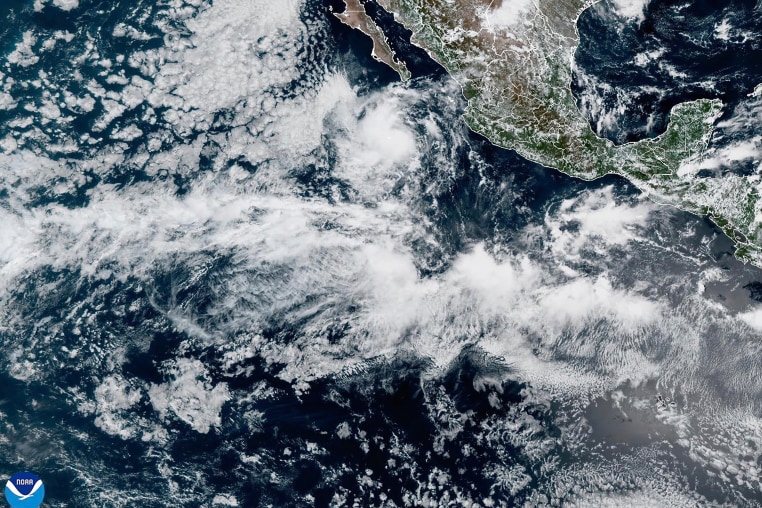
Lightning Fires Pose Increasing Threat to Extratropical Forests
Introduction
Lightning is the dominant cause of wildfire ignition in boreal forests, which are globally important for carbon storage. A new study published in Nature Geoscience reveals that the frequency of lightning fires will increase with climate change. Led by Vrije Universiteit (VU) Amsterdam, the research team used machine learning to predict the dominant source of wildfire ignitions globally. The study highlights the vulnerability of intact extratropical forests to the combined effects of a warmer climate and increased lightning strikes.
Key Findings
- 77% of burned areas in intact extratropical forests are related to lightning ignitions.
- Climate change will lead to an 11-31% increase in lightning frequency per degree of global warming over intact extratropical forests.
- Lightning fires are larger, more intense, and occur in remote areas during periods of extreme fuel dryness compared to anthropogenic fires.
- Extratropical forests store vast amounts of carbon and emit more CO2 per unit area when fires occur.
- Fires in intact extratropical forests emit over 8% of the total CO2 emissions from fires globally.
Sustainable Development Goals (SDGs)
- SDG 13: Climate Action – The study emphasizes the need to curb greenhouse gas emissions to reduce the risk of wildfires in extratropical forests.
- SDG 15: Life on Land – Protecting intact extratropical forests is crucial for preserving biodiversity and carbon storage.
Implications
The increasing frequency of lightning ignitions and the flammability of forests due to climate change pose a significant threat to intact extratropical forests. These forests, primarily located in the remote boreal regions of the northern hemisphere, store vast amounts of carbon and play a crucial role in mitigating global warming. However, when fires occur, they release large amounts of CO2 and other greenhouse gases. The study warns that wildfires can contribute to rising concentrations of carbon in the atmosphere, exacerbating the adverse impacts of climate change.
Conclusion
The research highlights the urgent need to reduce greenhouse gas emissions and mitigate climate change to protect extratropical forests from the increasing risk of lightning fires. Every tenth of a degree of warming avoided directly translates into a reduced risk of wildfire. By addressing the Sustainable Development Goals, particularly SDG 13 and SDG 15, we can work towards safeguarding these globally significant forests and their vital carbon stores.
SDGs, Targets, and Indicators
1. Which SDGs are addressed or connected to the issues highlighted in the article?
- SDG 13: Climate Action
- SDG 15: Life on Land
The article discusses the increased risk of lightning fires in extratropical forests due to climate change. This is directly related to SDG 13, which focuses on taking urgent action to combat climate change and its impacts. Additionally, the article highlights the importance of intact extratropical forests for carbon storage and their vulnerability to wildfires, which aligns with SDG 15, which aims to protect, restore, and promote sustainable use of terrestrial ecosystems.
2. What specific targets under those SDGs can be identified based on the article’s content?
- SDG 13.1: Strengthen resilience and adaptive capacity to climate-related hazards and natural disasters.
- SDG 15.2: Promote the implementation of sustainable management of all types of forests, halt deforestation, restore degraded forests, and substantially increase afforestation and reforestation globally.
The article emphasizes the need to strengthen resilience and adaptive capacity in extratropical forests to mitigate the risks of lightning fires caused by climate change. This aligns with SDG 13.1. Additionally, the protection and sustainable management of extratropical forests are crucial to prevent wildfires and preserve their carbon storage capacity, which relates to SDG 15.2.
3. Are there any indicators mentioned or implied in the article that can be used to measure progress towards the identified targets?
Yes, the following indicators can be used to measure progress towards the identified targets:
For SDG 13.1:
– Number of initiatives and policies implemented to enhance resilience and adaptive capacity in extratropical forests.
– Reduction in the frequency and severity of lightning fires in extratropical forests.
For SDG 15.2:
– Forest area protected and sustainably managed in extratropical regions.
– Reduction in the emissions of greenhouse gases from wildfires in extratropical forests.
The article mentions the increased risk of lightning ignitions and the need to avoid warming to reduce the risk of wildfires. These indicators can be used to measure progress towards the targets under SDGs 13.1 and 15.2.
4. Table: SDGs, Targets, and Indicators
| SDGs | Targets | Indicators |
|---|---|---|
| SDG 13: Climate Action | 13.1 Strengthen resilience and adaptive capacity to climate-related hazards and natural disasters. |
– Number of initiatives and policies implemented to enhance resilience and adaptive capacity in extratropical forests. – Reduction in the frequency and severity of lightning fires in extratropical forests. |
| SDG 15: Life on Land | 15.2 Promote the implementation of sustainable management of all types of forests, halt deforestation, restore degraded forests, and substantially increase afforestation and reforestation globally. |
– Forest area protected and sustainably managed in extratropical regions. – Reduction in the emissions of greenhouse gases from wildfires in extratropical forests. |
Behold! This splendid article springs forth from the wellspring of knowledge, shaped by a wondrous proprietary AI technology that delved into a vast ocean of data, illuminating the path towards the Sustainable Development Goals. Remember that all rights are reserved by SDG Investors LLC, empowering us to champion progress together.
Source: eurekalert.org

Join us, as fellow seekers of change, on a transformative journey at https://sdgtalks.ai/welcome, where you can become a member and actively contribute to shaping a brighter future.






